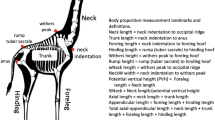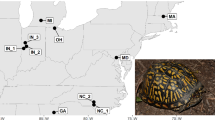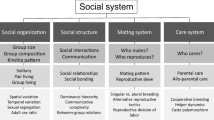Abstract
A major goal of evolutionary physiology is to understand the intrinsic and the extrinsic factors that impose limitations on an animal’s energy budget. Although natural selection acts upon organismal traits such as performance (e.g., burst, sustained metabolic rates), from a mechanistic perspective, organismal performance results from the integrated functioning of different levels of biological organization. Hence, a better understanding of whole-animal performance must necessarily incorporate an explicit analysis of the integration between those different levels. Although this topic has been under intense scrutiny, overall there have been very few consistent patterns. Here, we explore the phenotypic integration between organ masses and the overall energy budget under routine capacities by statistically decomposing the covariance matrix (using path analysis and canonical correlation analysis) between organ masses and thermoregulatory burst and sustained metabolisms in cold acclimated individuals of Phyllotis darwini. Our results suggest that (a) central organs associated with the processing of food (cecum and liver), residuals (kidneys) and pumping of O2 (heart) are tightly integrated to sustained expenditure and between themselves; (b) with the exception of the heart, central energy supplying organs are weakly related to burst expenditures; (c) sustained and burst metabolisms refer to complete different strategies and (d) basal metabolic rate is not related to any of the physiological or morphological traits considered in this study. Overall, our results support the hypothesis of an economic phenotype: animals maintain their excess capacities to face those critical extreme events, but their physiology and internal morphology are tightly integrated to function under routine needs.

Similar content being viewed by others
References
Bacigalupe LD, Bozinovic F (2002) Design, limitation and sustained metabolic rate: lessons from small mammals. J Exp Biol 205:2963–2970
Bacigalupe LD, Nespolo RF, Opazo JC, Bozinovic F (2004) Phenotypic flexibility in a novel thermal environment: phylogenetic inertia in thermogenic capacity and evolutionary adaptation in organ size. Physiol Biochem Zool 77:805–815
Bozinovic F, Rosenmann M, Veloso C (1988) Termorregulación conductual en Phyllotis darwini (Rodentia: Cricetidae): efecto de la temperatura ambiente, uso de nidos y agrupamiento social sobre el gasto de energía. Rev Chil Hist Nat 61:81–86
Butts CT (2009) yacca: yet another canonical correlation analysis package. R package version 1.1
Chappell MA, Bachman GC (1995) Aerobic performance in beldings ground-squirrels (Spermophilus beldingi): variance, ontogeny and the aerobic capacity model of endothermy. Physiol Zool 68:421–442
Chappell MA, Bech C, Buttemer WA (1999) The relationship of central and peripheral organ masses to aerobic performance variation in house sparrows. J Exp Biol 202:2269–2279
Chappell MA, Garland T Jr, Robertson GF, Saltzman W (2007) Relationships among running performance, aerobic physiology and organ mass in male Mongolian gerbils. J Exp Biol 210:4179–4197
Drent RH, Daan S (1980) The prudent parent: energetic adjustments in avian breeding. Ardea 68:225–253
Fox J (2009) sem: structural equation models. R package version 0.9-17. http://CRAN.R-project.org/package=sem
Hammond KA, Diamond JM (1997) Maximal sustained energy budgets in humans and animals. Nature 386:457–462
Hammond KA, Chappell MA, Cardullo RA, Lin RS, Johnsen TS (2000) The mechanistic basic of aerobic performance variation in red junglefowl. J Exp Biol 203:2053–2064
Hammond KA, Chappell MA, Cardullo RA, Lin RS, Johnsen TS (2001) Effects of altitude and temperature on organ phenotypic plasticity along an altitudinal gradient. J Exp Biol 204:1991–2000
Hertz PF, Huey RB, Garland T Jr (1988) Time budgets, thermoregulation, and maximal locomotor performance: are reptiles Olympians or Boy Scouts? Am Zool 28:927–938
Karasov WH, McWilliams SR (2005) Digestive constraints in mammalian and avian ecology. In: Starck JM, Wang T (eds) Physiological and ecological adaptations to feeding in vertebrates. Science Publishers, New Hampshire, pp 87–112
Kirkwood JK (1983) A limit to metabolisable energy intake in mammals and birds. Comp Biochem Physiol A 75:1–3
Knight CH, Maltz E, Docherty AH (1986) Milk yield and composition in mice: effects of litter size and lactation number. Comp Biochem Physiol A 84:127–133
Konarzweski M, Diamond JM (1994) Peak sustained metabolic rate and its individual variation in cold-stressed mice. Physiol Zool 67:1186–1212
McDevitt RM, Speakman JR (1994) Central limits to sustainable metabolic rate have no role in cold acclimation of the short-tailed field vole (Microtus agrestis). Physiol Zool 67:1117–1139
Naya DE, Bacigalupe LD (2008) Metabolic constraints to resource allocation. In: Rauw W (ed) Resource allocation theory applied to farm animals. CAB International Publishing, UK, pp 87–112
Naya DE, Bacigalupe LD, Bustamante DM, Bozinovic F (2005) Dynamic digestive responses to increased energy demands in the leaf-eared mouse (Phyllotis darwini). J Comp Physiol B 175:31–36
Naya DE, Karasov WH, Bozinovic F (2007) Phenotypic plasticity in laboratory mice and rats: a meta-analysis of current ideas on gut size flexibility. Evol Ecol Res 9:1363–1374
Naya DE, Bozinovic F, Karasov WH (2008) Latitudinal trends in digestive flexibility: testing the climatic variability hypothesis with data on the intestinal length in rodents. Am Nat 172:122–134
Nespolo RF, Bacigalupe LD, Bozinovic F (2003) On the heritability of ecophysiological type traits in endotherms: a study in leaf-eared mice (Phyllotis darwini). Evolution 57:1679–1688
Peterson CC, Nagy KA, Diamond JM (1990) Sustained metabolic scope. Proc Natl Acad Sci USA 87:2324–2328
Quinn GP, Keough MJ (2002) Experimental design and data analysis for biologists. Cambridge University Press, Cambridge
R Development Core Team (2009) R: a language and environment for statistical computing. R Foundation for Statistical Computing, Vienna, Austria. ISBN 3-900051-07-0. http://www.R-project.org
Rezende EL, Bozinovic F (2001) Patterns of daily activity in the leaf-eared mouse (Phyllotis darwini): effects of food availability. J Arid Environ 47:95–100
Rogowitz GL (1996) Trade-offs in energy allocation during lactation. Am Zool 36:197–204
Rogowitz GL (1998) Limits to milk flow and energy allocation during lactation of the hispid cotton rat (Sigmodon hispidus). Physiol Zool 71:312–320
Rogowitz GL, McClure PA (1995) Energy export and offspring growth during lactation in cotton rats (Sigmodon hispidus). Funct Ecol 9:143–150
Rosenmann M, Morrison PR (1974) Maximum oxygen consumption and heat loss facilitation in small homeotherms by He–O2. Am J Physiol 226:490–495
Rosenmann M, Morrison PR (1975) Metabolic response of highland and lowland rodents to simulated high altitudes and cold. Comp Biochem Physiol A 51:523–530
Shipley B (2000) Cause and correlation in biology: a user’s guide to path analysis, structural equations and causal inference. Cambridge University Press, Cambridge
Speakman JR (2000) The cost of living: field metabolic rates of small mammals. Adv Ecol Res 30:177–297
Speakman JR, Krol E (2005) Limits to sustained energy intake IX: a review of hypotheses. J Comp Physiol B 175:375–394
Veloso C, Bozinovic F (2000) Effect of food quality on the energetics of reproduction in a precocial rodent, Octodon degus. J Mamm 81:971–978
Weibel ER (2000) Symmorphosis. On form and function in shaping life. Harvard University Press, Cambridge
Weibel ER (2002) The pitfalls of power laws. Nature 417:131–132
Weiner J (1989) Metabolic constraints to mammalian energy budgets. Acta Theriol 34:3–35
Withers PC (1977) Measurement of VO2, VCO2, and evaporative water loss with a flow-through mask. J Appl Physiol 42:120–123
Acknowledgments
We would like to thank comments by two reviewers that greatly improved a previous version of the manuscript. This work was funded by grants Fondo Nacional de Desarrollo de Áreas Prioritarias 1501-0001 (Program 1) to FB and Fondo Nacional de Ciencia y Tecnología 2000002 to RFN. All experiments were conducted according to current Chilean law and under Servicio Agrícola Ganadero permit 698.
Author information
Authors and Affiliations
Corresponding author
Additional information
Communicated by I. D. Hume.
Rights and permissions
About this article
Cite this article
Bacigalupe, L.D., Bustamante, D.M., Bozinovic, F. et al. Phenotypic integration of morphology and energetic performance under routine capacities: a study in the leaf-eared mouse Phyllotis darwini . J Comp Physiol B 180, 293–299 (2010). https://doi.org/10.1007/s00360-009-0410-0
Received:
Revised:
Accepted:
Published:
Issue Date:
DOI: https://doi.org/10.1007/s00360-009-0410-0




